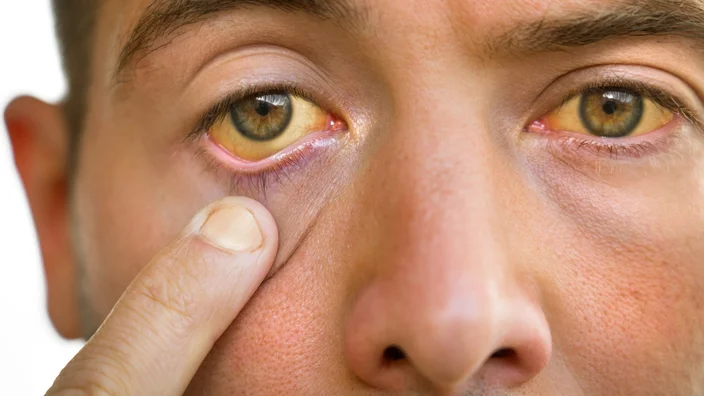What is Aplastic Anemia? Causes, Symptoms and Treatment
Aplastic anemia is a rare disease in which your bone marrow stops producing new blood cells. With no new blood cells, your body can’t replace old or damaged ones. As a result, you may have fewer red blood cells, white blood cells, and platelets. If left untreated, aplastic anemia can be life-threatening. Aplastic anemia can be acquired or inherited. The acquired form is the most common type of condition, and its causes are poorly understood.
Most cases of acquired aplastic anemia are triggered by exposure to chemicals or infection with certain viruses, bacteria or parasites. Suppose you have been diagnosed with aplastic anemic. In that case, treatment is available and will focus on managing symptoms and reducing the risk of complications from low red blood cell counts (anemia) and low platelet counts (thrombocytopenia).
Symptoms of Aplastic Anemia
Aplastic anemia doesn’t cause any symptoms until it’s severely impacting your health, so it’s important to be aware of the signs. Symptoms may include:
1. Swollen or bleeding gums

A sign that your body is not making enough new blood cells to fight off dental infections.
2. Shortness of breath

Decreased red blood cells can cause you to have less oxygen in your body.
3. Extreme fatigue

Anemia can make it difficult to function normally at your highest level.
4. Easy bruising or bleeding

A sign that your body is not producing enough platelets.
5. Yellowing of the skin or eyes

An early sign of liver damage.
6. Seizures

A sign that your body is running low on red blood cells.
7. Headaches

A symptom of low blood pressure and low oxygen levels in the brain.
8. Mood changes

A symptom of low blood pressure and low oxygen levels in the brain.
9. Unusual changes in your vision

A symptom of low blood pressure and low oxygen levels in the brain.
Causes of Aplastic Anemia
Inherited aplastic anemia is a rare condition. Aplastic anemia can be acquired or inherited. The acquired form is the most common type of condition, and its causes are not well understood. Most cases of acquired aplastic anemia are triggered by exposure to chemicals or infection with certain viruses, bacteria or parasites.
Aplastic anemia can be inherited when a person inherits an abnormal gene mutation from a parent. This can lead to an overproduction of red blood cells, white blood cells and platelets in the bone marrow, causing it to become overstimulated and stop producing new blood cells.
Inherited Aplastic Anemia
Inherited aplastic anemia happens when one parent passes on an abnormal gene mutation to their child. When the child is born, he or she will have the gene mutation and may have inherited the condition. Aplastic anemia occurs because the body can’t make enough new blood cells.
An inherited aplastic anemia diagnosis is confirmed when blood tests show there are too many red blood cells, white blood cells or platelets in the bone marrow, causing it to become overstimulated and stop producing new blood cells.
Acquired Aplastic Anemia
Acquired aplastic anemia occurs when something harmful happens to your body and damages your bone marrow, stopping it from producing new blood cells. When this happens, you have anemia, as your body can’t make enough new blood cells to replace old or damaged ones. Acquired aplastic anemia is more likely to happen if you’re exposed to dangerous chemicals, certain infections, radiation or have received chemotherapy.
The main causes of acquired aplastic anemia are exposure to toxic chemicals, infections such as those with cytomegalovirus (CMV), Epstein-Barr virus (EBV) and toxoplasmosis, and exposure to certain medicines, including antibiotics, chemotherapies and anticonvulsants.
Treatment for Aplastic Anemia
Aplastic anemia can be serious, so it’s important to see your doctor for diagnosis and treatment. Aplastic anemia can be treated with blood transfusions. If you have a low red blood cell count, you may need regular transfusions to replace lost blood cells. If you have low white blood cell or platelet counts, your doctor may prescribe medication to stimulate the production of healthy cells.
Biological therapies have become the first-line treatment for all-HSCT-associated aplastic anemia. Biological therapies include ruxolitinib, lenalidomide, low-dose thalidomide and intravenous immunoglobulin (IVIG).-border
Summing Up: Understanding Aplastic Anemia
Aplastic anemia is a rare disease in which your bone marrow stops producing new blood cells. With no new blood cells, your body can’t replace old or damaged ones. Aplastic anemia can be inherited when a parent passes on an abnormal gene mutation to their child. It can also be acquired when something harmful happens to your body and damages your bone marrow, stopping it from producing new blood cells.
Suppose you have been diagnosed with aplastic anemia. In that case, treatment is available and will focus on managing your symptoms and reducing the risk of complications from low red blood cell counts (anemia) and low platelet counts (thrombocytopenia).
Source –


